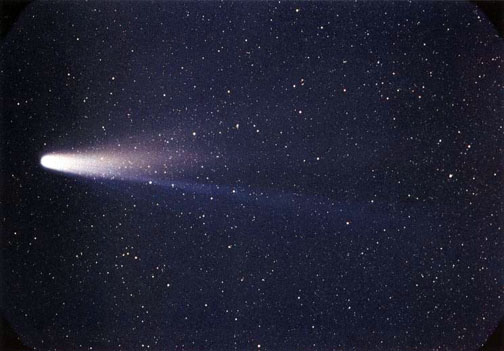
|
This is a classic view of a comet as seen from Earth: a bright tip followed by a long tail. The core of a comet, called the nucleus, is a block of dirty ice. As the comet comes close eough to the Sun to feel its warmth, water vapor, other gases, and dust are vaporized and form the two features that we see from Earth. The coma ('atmosphere') is a ball of gas and dust surrounding the nucleus that forms the bright white tip seen above. The coma can be a million km in diameter! The tail consists of two streams, one the whitish stream of gas and dust and the other a bluish stream of plasma (ions and electrons). The gas and dust tend to follow behind the moving comet whereas the ions move directly away from the Sun. Altogether, the tail can be up to 150 million km long! In comparison, Comet Halley, shown above, has a nucleus a mere 15 km across. Next: Close-Up of Haley's CometImage credit and caption information: NASA's National Space Science Data Center |
![]()
|
|
|
